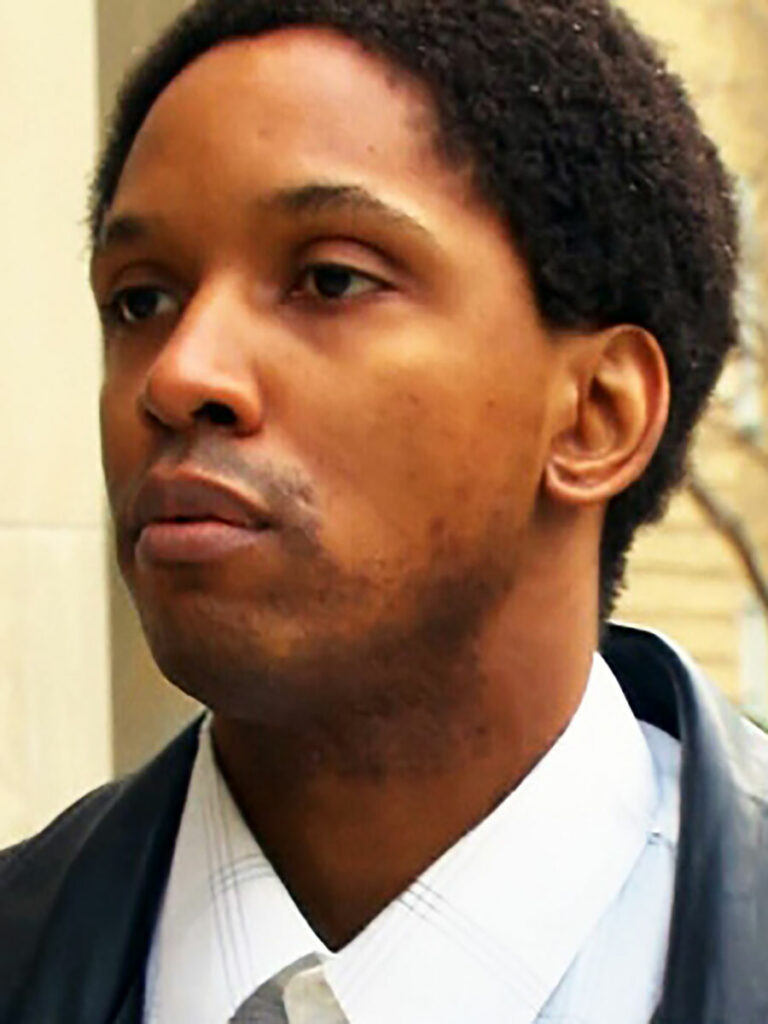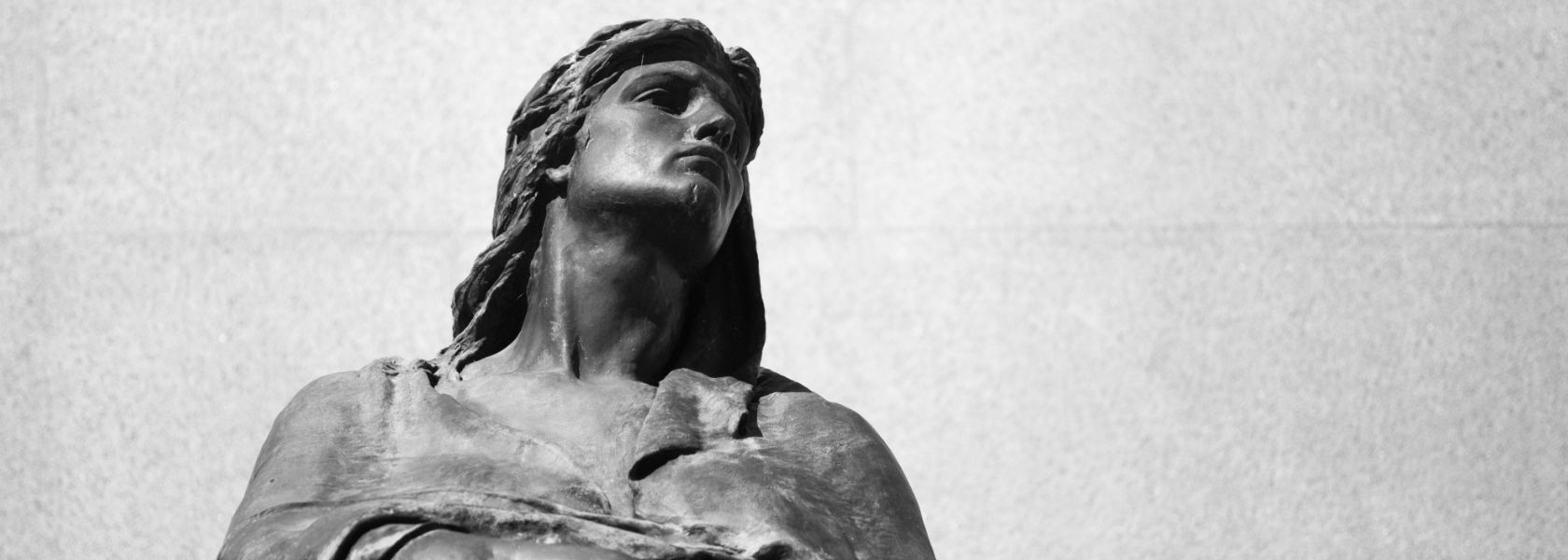Leighton Hay
On Friday, July 5, 2002 Leighton Hay was a 19-year-old attending high-school extension courses. Although it was a Friday evening he decided to stay at home where he lived with his mother and older sister, Lisa. He was oblivious to the tragic events that were about to unfold, events which would change his life forever.
At 12:58 a.m. on July 6, 2002, four men and a woman tried to enter the HHMS Nightclub on Victoria Park Avenue in Scarborough, Ontario without paying the cover charge. An altercation broke out. Roger Moore, one of the organizers of the event taking place that evening, hit one of the men over the head with a bottle. The intruders left but at 1:14 a.m. three men with handguns pushed their way into the club and eventually two of them entered the kitchen where brothers Colin and Roger Moore were standing. Colin Moore was shot eight times and died from his wounds. Roger Moore survived the bullet wound that grazed his forehead.
In the kitchen at the time of the shooting were Colin Moore’s wife Jennifer Moore and friend Leisa Maillard. Neither was injured.
Jennifer Moore identified Gary Eunick as one of shooters. He was Lisa Hay’s boyfriend and was known to Jennifer Moore and other patrons of the night club, including its owner. He was also identified by several of the eyewitnesses as one of the three men who had been involved in the earlier fight as well as being one of the gunmen. Jennifer Moore did not recognize the second gunman who was dressed in a blue plaid shirt. However, Leisa Maillard said that she kept her eyes on the second shooter whom she said she observed for approximately 16 seconds.
Leisa Maillard and other eyewitnesses told the police that the second shooter had two-inch picky dreadlocks.
The owner of the nightclub had written down the license plate number of the car in which the shooters escaped. The police were able to identify the car as belonging to Lydia Hay, Leighton’s mother.
The police immediately put the Hay home under surveillance and at around noon on July 6, 2002 they arrested both Gary Eunick and Leighton. However, the police had a problem. At the time of his arrest, Leighton did not have two-inch picky dreadlocks. When questioned by the police, Leighton told them that his hair had been cropped short for the past 18 months.
Upon searching the Hay home, the police found short hairs wrapped in a newspaper in the garbage can in the bathroom, adjacent to Leighton’s bedroom. The police also observed hairs in an electric razor on a table next to Leighton’s bed. Leighton advised the police that he had shaved his face two days previously.
However, the police were convinced that Leighton must have returned home after the shooting and shaved his head in order to disguise his appearance. No long hairs were found so the police surmised that Leighton had flushed those hairs down the toilet.
The case against Leighton Hay at trial rested on the eyewitness evidence of Leisa Maillard whom the police had shown a photo line-up which included him. She pointed at his photo saying that he looked more like the second gunman than the other 11 photos, giving an 80% estimate of her own accuracy. Leisa Maillard was shown a second line-up three weeks later and did not select Leighton’s photo. At court at the preliminary hearing, she identified Gary Eunick as the second gunman.
At his trial, the Crown told the jury that the residue found in the electric razor and the newspaper was what was left after Leighton cut his dreadlocks and flushed the longer hairs down the toilet.
The jury convicted both Leighton and Gary Eunick of first-degree murder.
On May 12, 2009, the Ontario Court of Appeal dismissed Leighton’s appeal. The Court laid particular emphasis on the supposed haircut which “tipped the scales” in support of the jury’s verdict.
After Leighton lost his appeal, the Association in Defence of the Wrongly Convicted (AIDWYC), now Innocence Canada, adopted his case as one of likely innocence.
Our lawyers decided to seek scientific testing of the hairs found in the Hay home to see whether they were really facial/beard hairs. Mr. Tony Tessarolo, the Director of the Centre of Forensic Sciences (the Centre) agreed to have the Centre conduct a forensic examination of the hairs to determine their bodily origin. The Crown opposed this testing and refused to release the hairs to the Centre for examination. Innocence Canada asked the Supreme Court of Canada for an order that the exhibits be released to the Centre. On November 18, 2010, the Supreme Court of Canada made this order.
The examination was conducted by Centre scientist, Joanne Almer, and an outside expert, retained by the defence. Microscopic examination showed that the hairs were facial hairs, not head hairs. The prosecution theory that Leighton had shaved his head to disguise his appearance was unsustainable. Leighton could not have been the gunman with the two-inch picky dreads.
On April 23, 2013 Innocence Canada counsel, James Lockyer and Philip Campbell, argued Leighton’s case in the Supreme Court of Canada.
On November 8, 2013, in a lengthy judgment, the Supreme Court of Canada admitted the new scientific evidence, quashed Leighton’s conviction and ordered a new trial on the charge of first degree murder.
In the judgment, Mr. Justice Rothstein said:
“Given the significance of the haircut to the Crown’s case, Mr. Hay’s fresh evidence indicating that the hair clippings did not come from a scalp shave could reasonably be expected to have affected the result”.
Following the Supreme Court decision, the Crown continued to act as if it intended to proceed with the new trial. This was painstakingly stressful for Leighton and his family.
On November 28, 2014 the Crown finally withdrew the first-degree murder charge against Leighton. For the first time in 12½ years, he was a free man. Leighton walked out into the sunlight and was reunited with his father and sister.
James Lockyer who championed Leighton’s case and fought for his freedom alongside Phil Campbell said:
“Leighton has been through a nightmare for all these years. His walk into freedom today will be momentous for him and for us at AIDWYC. His family will be at court and he will need all their support and AIDWYC’s support in the months to come.
This was a miscarriage of justice of the highest order.”
Phil Campbell, one of Leighton’s dedicated lawyers, said:
“I will never forget how crushed I was on the day Leighton’s conviction was upheld after his first appeal; it was the bleakest day of my career. Today is a better, brighter day, Leighton has faced many challenges during his years in penitentiary and more lie ahead. The consequences of his wrongful conviction will linger long after the courts and lawyer close their files. But for today, his freedom and the righting of a wrong are worth celebrating.”
Since his walk into the sunshine Leighton has proven to be a wise young man of few words who takes one day at a time. He has not allowed the 12 years of his life that he lost to dampen his positive outlook or stop him from pursuing his interests or dreams in his time and in his unique way.
Innocence Canada’s Director of Client Services, Win Wahrer, describes him as patient, kind and forgiving as well as resolute, loyal with a deep thirst for knowledge:
“Leighton is a person of high integrity, intuitiveness, hardworking and dependable who deserves the opportunity to realize and achieve all his personal and professional goals and in time despite the challenges that lie ahead, I am sure he will.”


